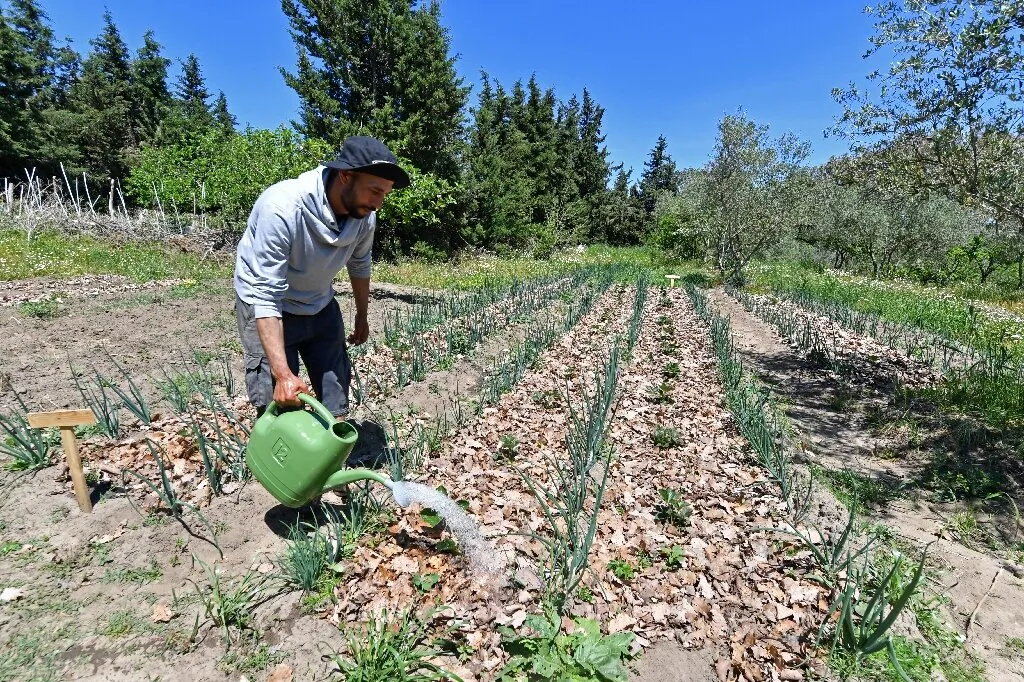In the heart of Tunisia, a groundbreaking study led by Roua Amami from the Higher Institute of Agricultural Sciences of Chott Mariem, University of Sousse, is shedding new light on the power of mulching strategies in organic greenhouse farming. The research, published in *Frontiers in Agronomy* (which translates to *Frontiers in Agronomy*), is not just about improving soil quality; it’s about revolutionizing crop productivity and sustainability in semi-arid environments.
Amami and her team conducted a field experiment in an unheated greenhouse, comparing five different mulching treatments: black polyethylene mulch (BM), white polyethylene mulch (WM), straw mulch (SM), compost mulch (CM), and a bare soil control (CK). The results are nothing short of transformative. “Plastic mulch, particularly black polyethylene, proved to be the most effective in enhancing soil conditions, microbial activity, and eggplant productivity in the short term,” Amami explained. This finding could have significant implications for farmers and the energy sector, particularly in regions where water scarcity and soil degradation are pressing concerns.
The study revealed that black polyethylene mulch (BM) maintained the highest soil temperature and water content, leading to a substantial 29.5 t ha⁻¹ increase in eggplant yield compared to other treatments. This is a game-changer for commercial agriculture, where maximizing yield while minimizing resource use is crucial. “These results highlight its potential as a cost-effective strategy for improving crop performance and soil resilience in semi-arid organic greenhouse systems,” Amami noted.
But the benefits don’t stop at yield. The research also showed that compost mulch (CM) significantly enhanced soil organic matter, available phosphorus, potassium, and total nitrogen. This improvement in soil quality is vital for long-term sustainability and could reduce the need for synthetic fertilizers, aligning with the principles of organic farming.
The study also delved into the microbial communities, finding that straw mulch (SM) promoted the greatest microbial abundance, including bacteria and fungi. This is a critical insight, as healthy microbial communities are essential for nutrient cycling and soil health. The Soil Quality Index (SQI) ranged from 0.34 to 0.58, with BM recording the highest value and CK the lowest. This underscores the importance of choosing the right mulching strategy to enhance overall soil health and productivity.
While the findings are promising, Amami cautions that further long-term studies across diverse environments and soil types are necessary to confirm the broader applicability of these results. “Nonetheless, the potential is clear,” she added. “This research could shape future developments in sustainable agriculture, particularly in regions facing water scarcity and soil degradation.”
The implications for the energy sector are also noteworthy. As the world shifts towards more sustainable practices, the agricultural sector must adapt to reduce its environmental footprint. By improving soil quality and enhancing crop productivity, mulching strategies can contribute to more efficient resource use and reduced energy consumption in farming practices.
In conclusion, Amami’s research offers a compelling case for the adoption of plastic mulch, particularly black polyethylene, in organic greenhouse farming. It’s a step towards a more sustainable and productive future, one that could redefine agricultural practices in semi-arid regions and beyond. As the world grapples with the challenges of climate change and resource scarcity, such innovations are not just welcome; they are essential.

